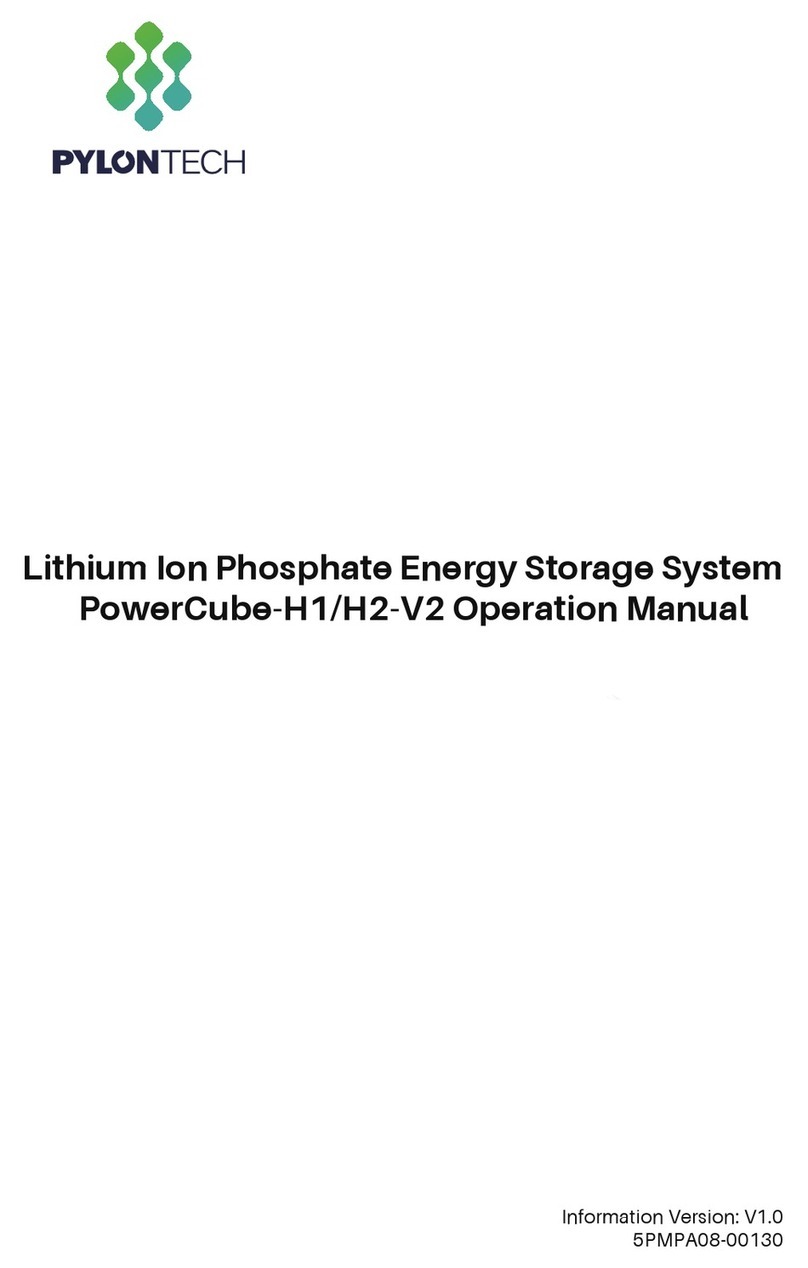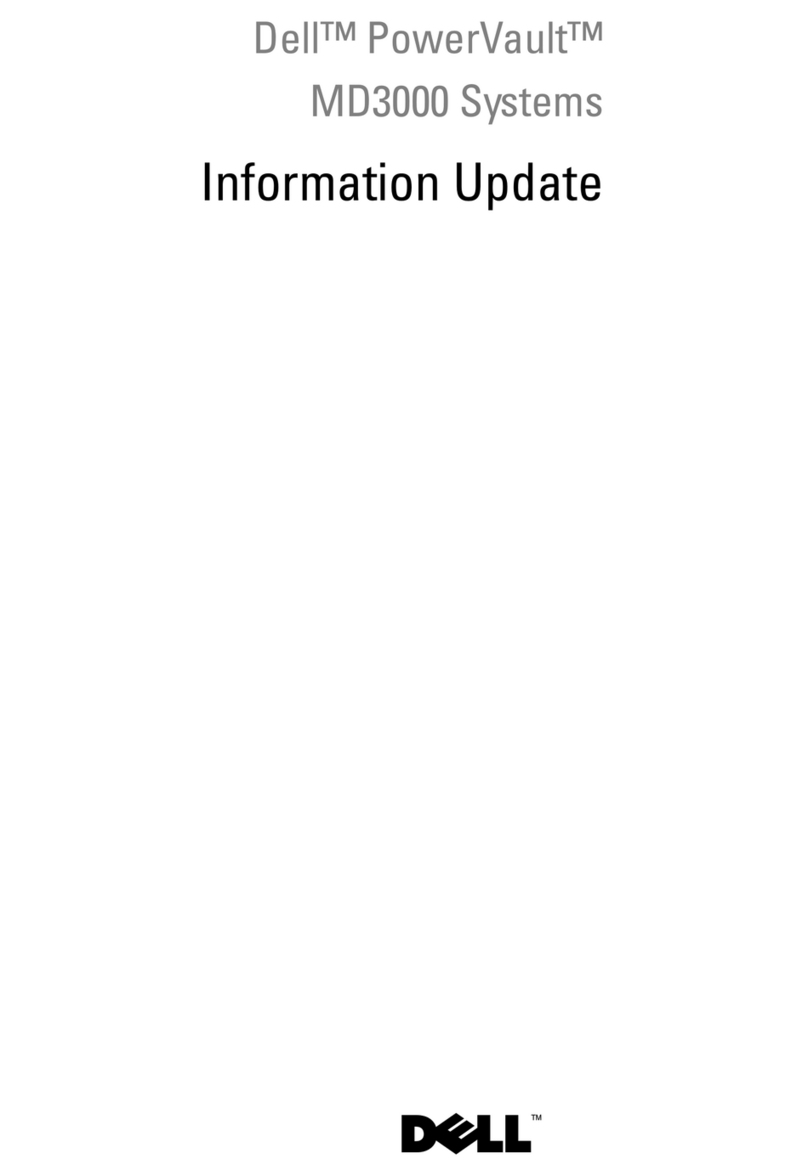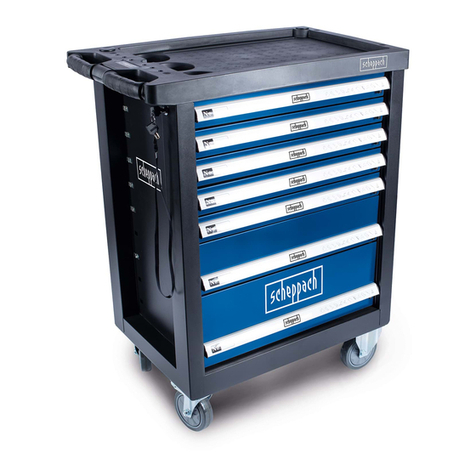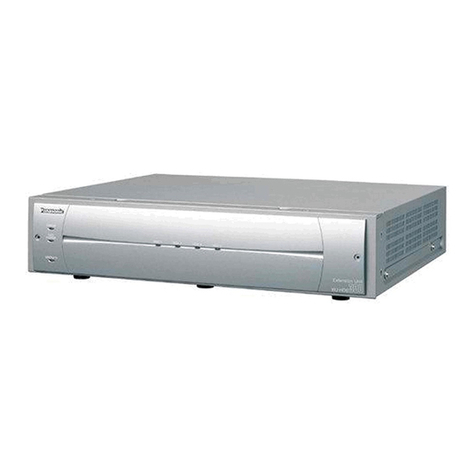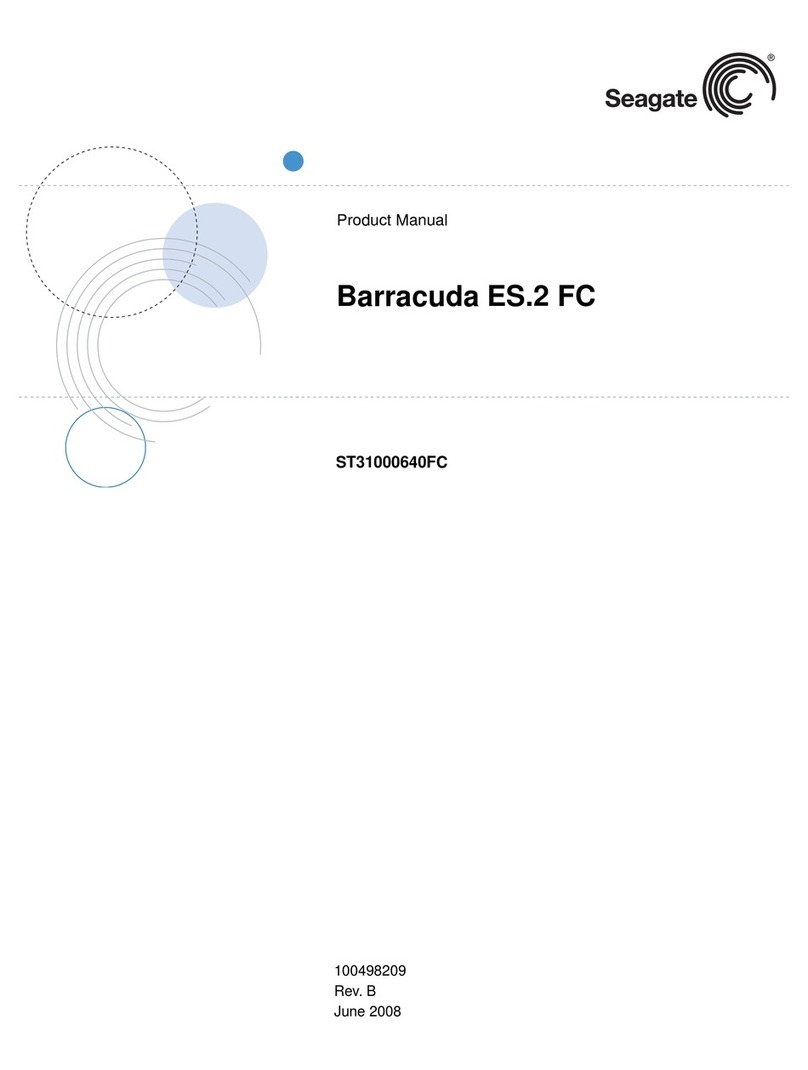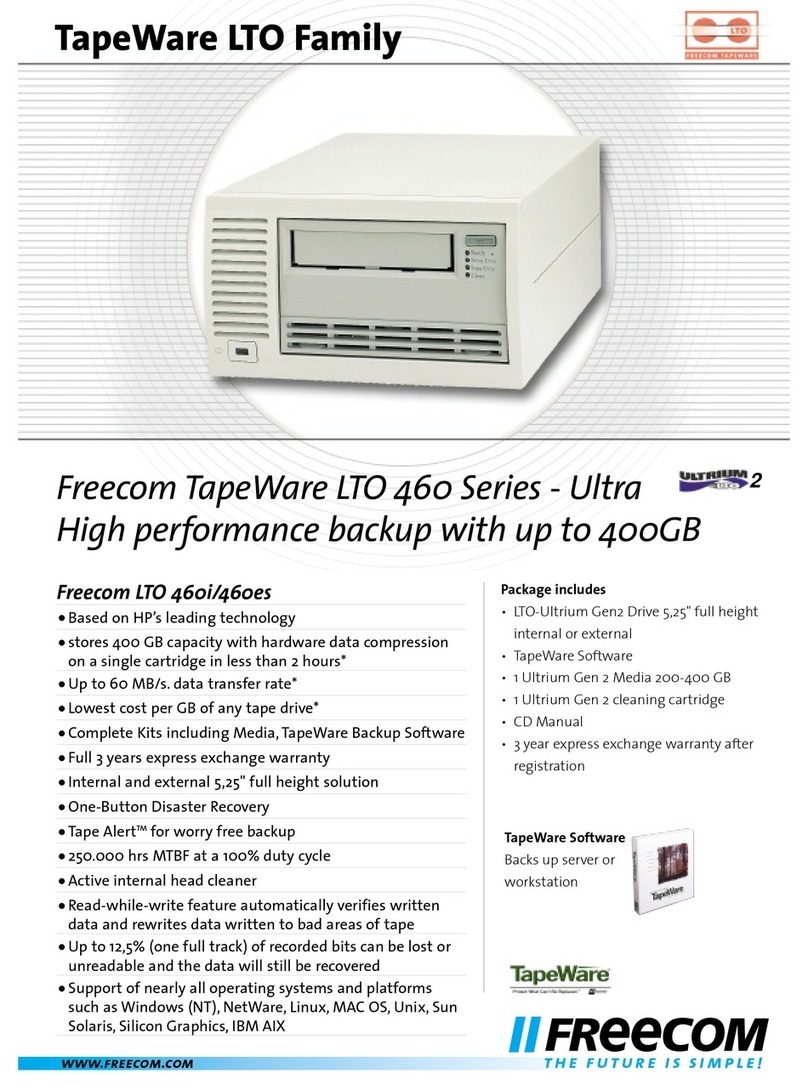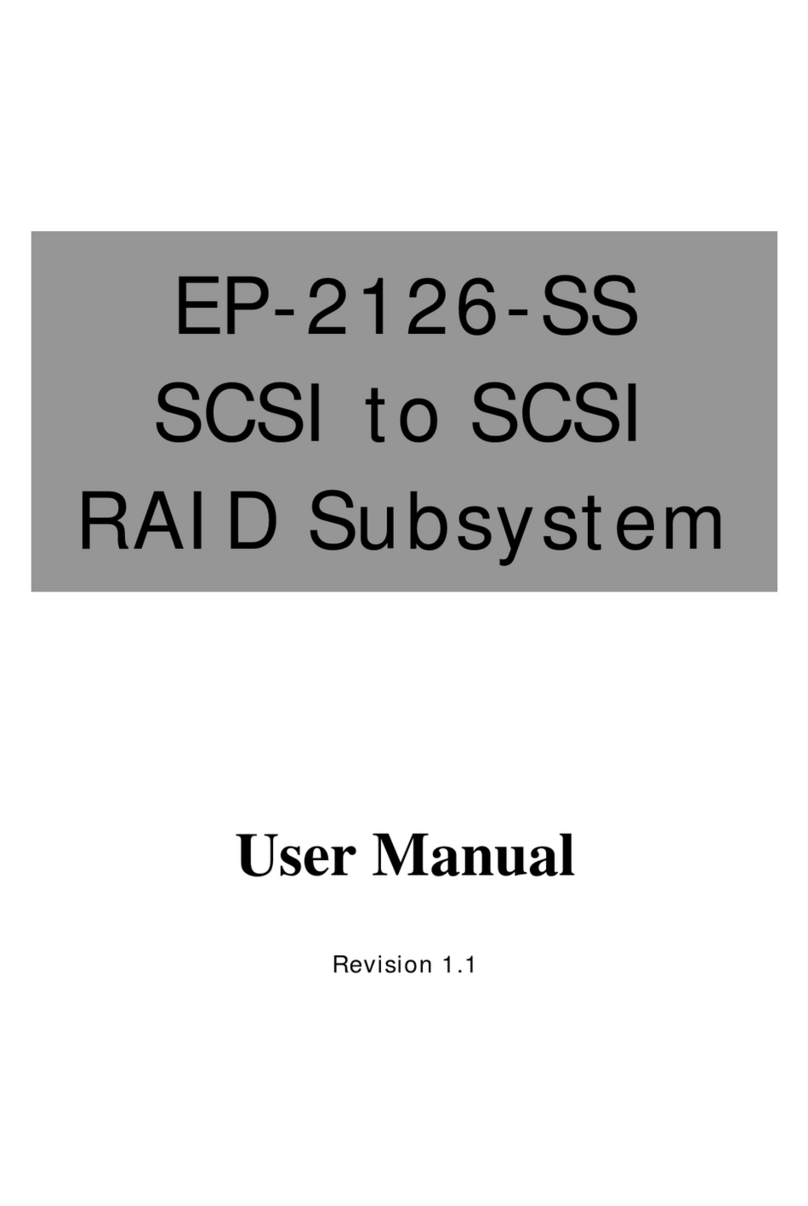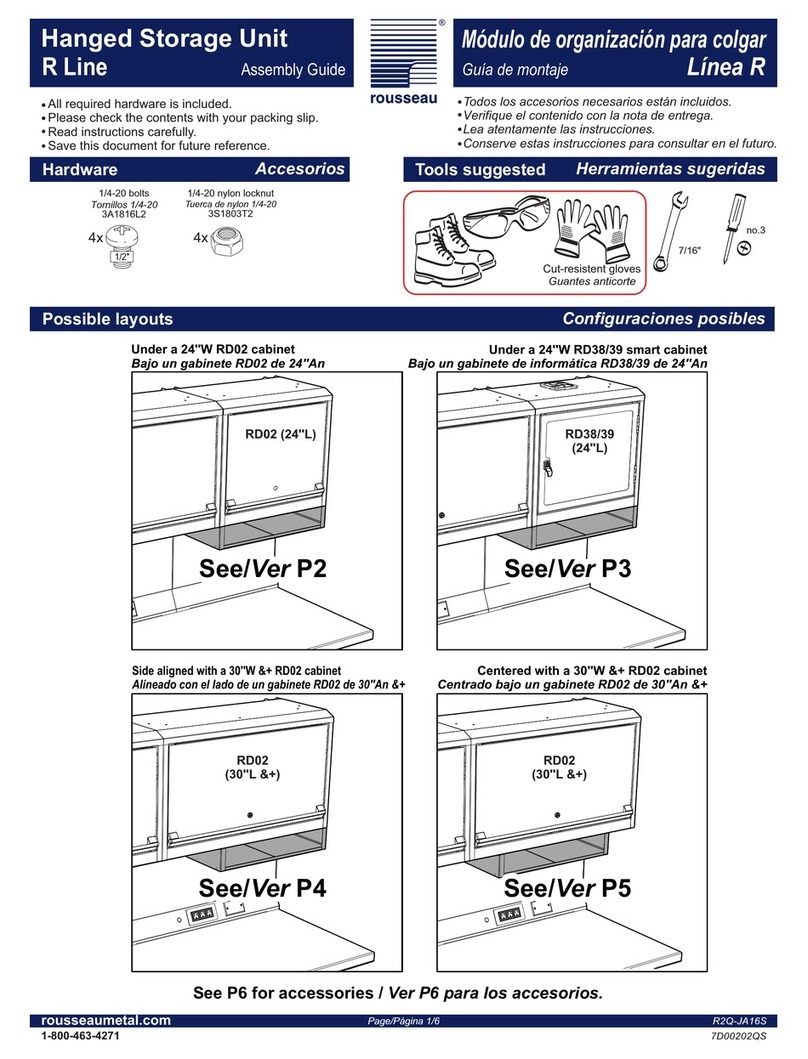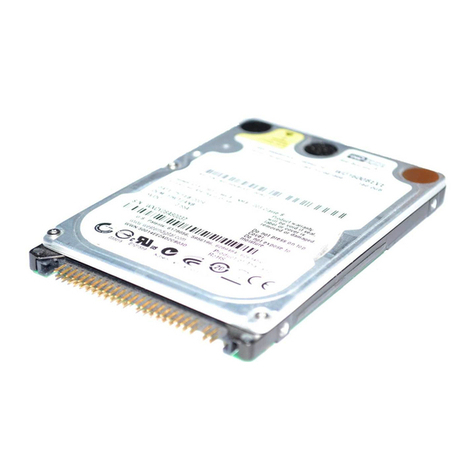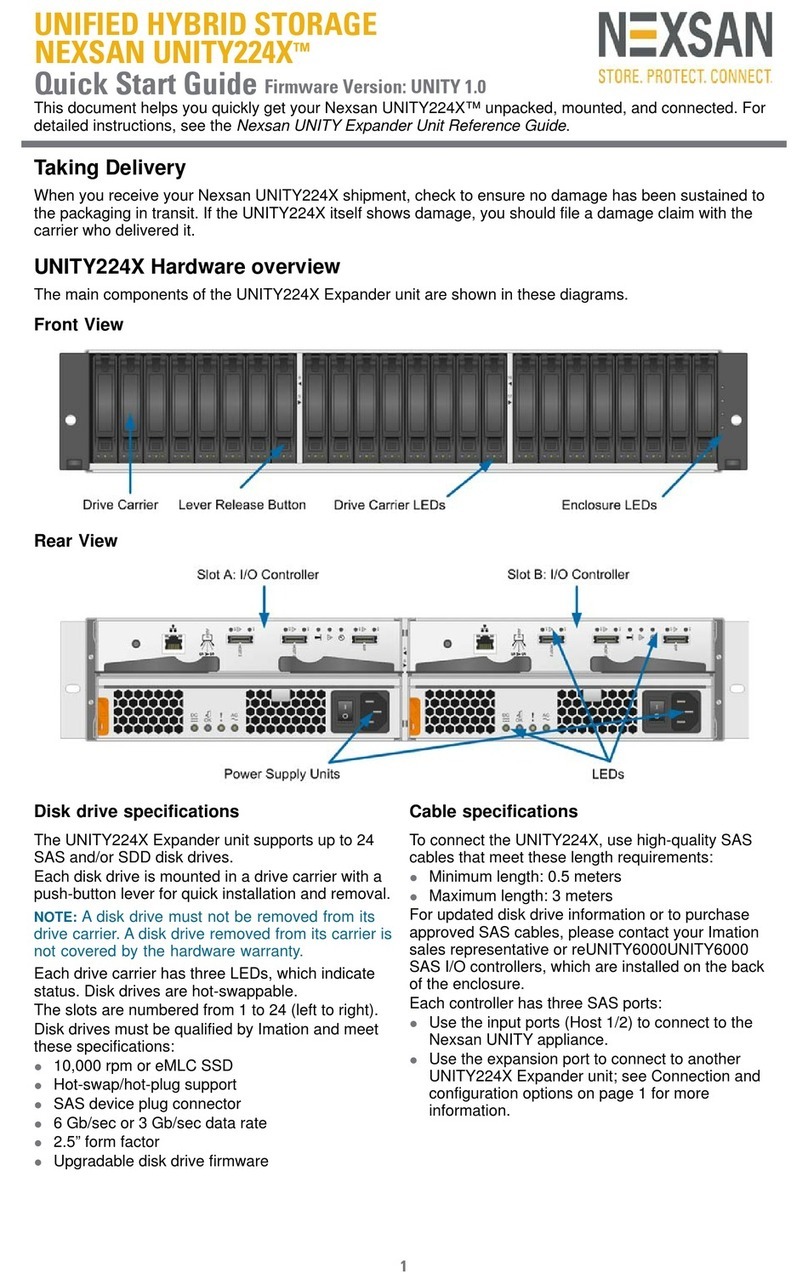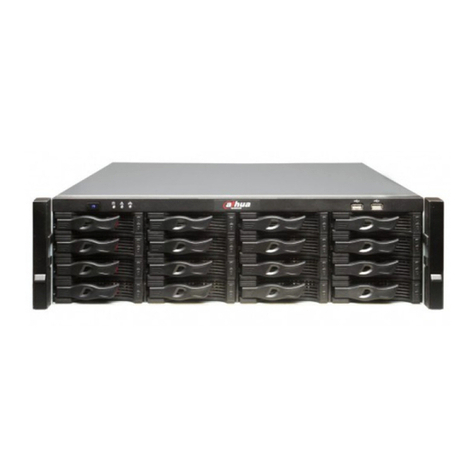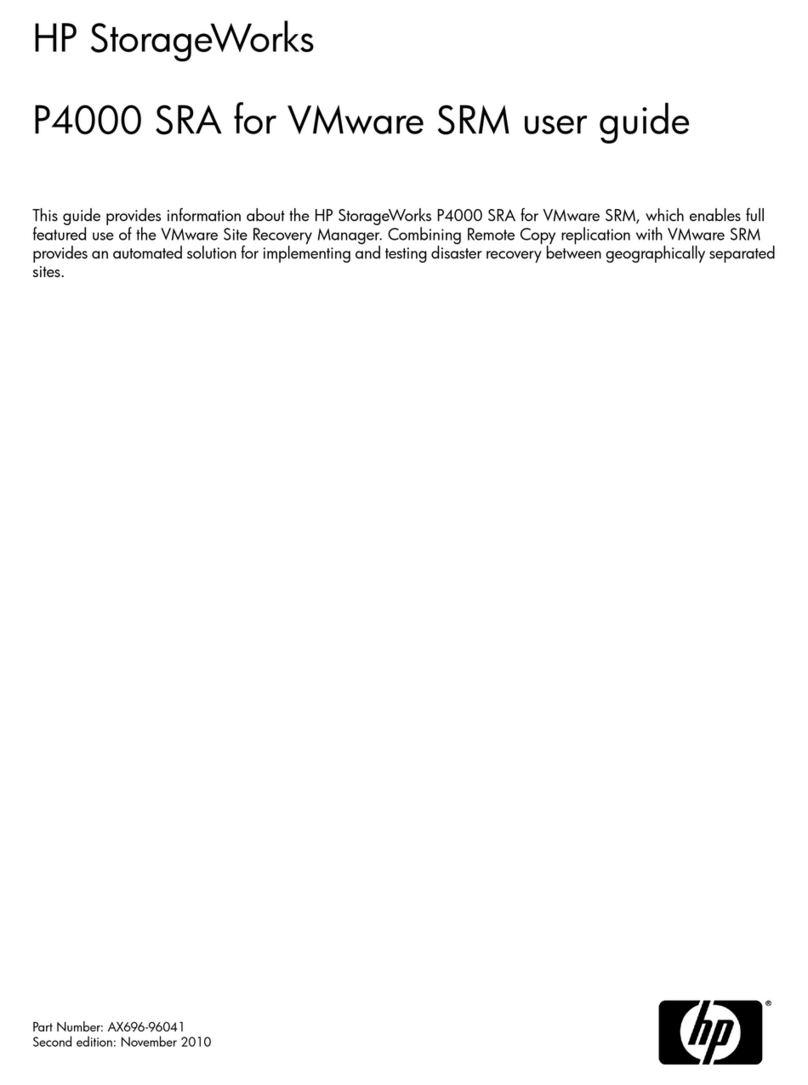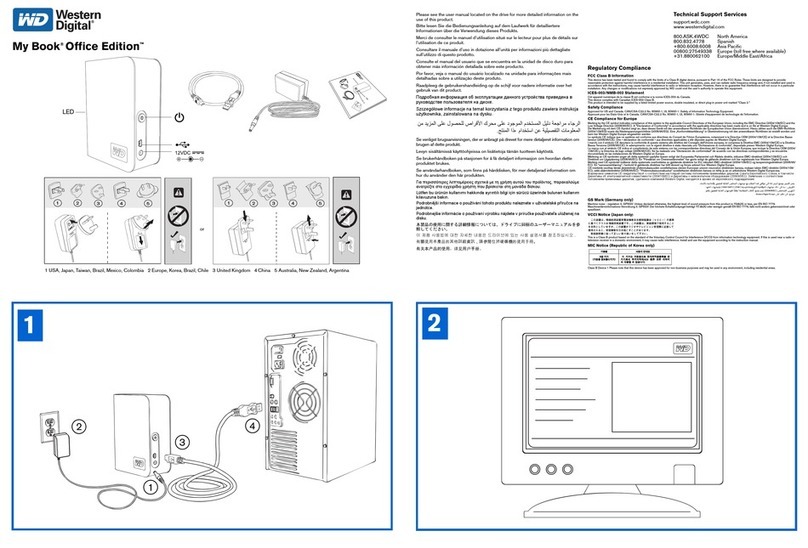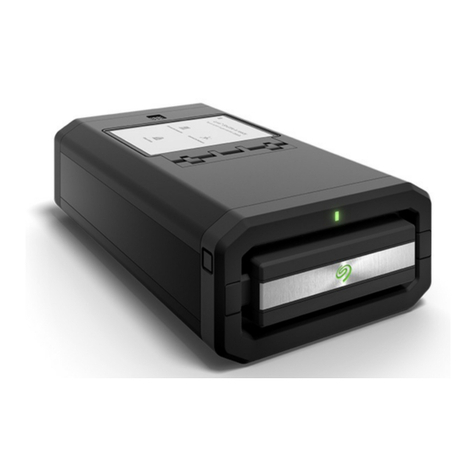CFI TERA BOX SATA RAID IV User manual

TERA BOX
SATA RAID IV
Storage Appliance
CFI-BXX43JD
User’s Manual
March 31, 2010

Table of Contents
1WELCOME........................................................................................................................................................4
1.1 INTRODUCTION...........................................................................................................................................4
1.2 PRECAUTION................................................................................................................................................5
1.3 FEATURES .....................................................................................................................................................5
1.3.1 OVERALL FEATURES................................................................................................................................5
1.3.2 SATA FEATURES ........................................................................................................................................6
1.3.3 USB FEATURES...........................................................................................................................................6
1.4 SPECIFICATIONS.........................................................................................................................................6
1.5 SYSTEM REQUIREMENTS.........................................................................................................................7
1.5.1 PC SYSTEMS................................................................................................................................................7
1.5.2 MACINTOSH SYSTEMS.............................................................................................................................7
1.6 PRODUCT CONTENTS................................................................................................................................8
2STORAGE POLICIES......................................................................................................................................9
2.1.1 CLEAN MODE..............................................................................................................................................9
2.1.2 LARGE MODE..............................................................................................................................................9
2.1.3 CLONE MODE............................................................................................................................................10
2.1.4 R0 MODE ....................................................................................................................................................11
2.1.5 R1 MODE ....................................................................................................................................................11
2.1.6 R10 MODE ..................................................................................................................................................12
2.1.7 R3 MODE ....................................................................................................................................................12
2.1.8 R5 MODE ....................................................................................................................................................13
3INSTALLATION.............................................................................................................................................15
3.1 BEFORE INSTALLING ..............................................................................................................................15
3.2 INSTALLING HARD DISK DRIVE...........................................................................................................15
3.3 UNSTALLING HARD DISK DRIVE..........................................................................................................16
3.4 POWER ON /OFF........................................................................................................................................17
3.5 INSTALLING SATA TO ESATA BRACKET CABLE.............................................................................17
3.6 INSTALLING EH HOST BUS ADAPTER (OPTIONAL)........................................................................18
3.6.1 WINDOWS XP (32/64-BIT).........................................................................................................................18
3.6.2 WINDOWS VISTA (32/64-BIT)..................................................................................................................19
3.6.3 WINDOWS 7(32-BIT).................................................................................................................................21
3.6.4 WINDOWS 7(64-BIT).................................................................................................................................23
3.6.5 MACINTOSH OS TIGER 10.4.X /LEOPARD 10.5.X /SNOW LEOPARD 10.6.X..................................26
3.7 INSTALLING MR HOST BUS ADAPTER (OPTIONAL).......................................................................31
3.7.1 WINDOWS XP (32/64-BIT).........................................................................................................................31
3.7.2 WINDOWS VISTA (32/64-BIT)..................................................................................................................34
3.7.3 WINDOWS 7(32-BIT).................................................................................................................................36
3.7.4 WINDOWS 7(64-BIT).................................................................................................................................40
3.8 INSTALLING NH HOST BUS ADAPTER (OPTIONAL)........................................................................43
3.8.1 WINDOWS XP (32/64-BIT).........................................................................................................................43
3.8.2 WINDOWS VISTA (32/64-BIT)..................................................................................................................47
3.8.3 WINDOWS 7(32/64-BIT)............................................................................................................................51
Ver. 100331 TERA BOX SATA RAID IV User’s Manual
2

4CONFIGURATION.........................................................................................................................................55
4.1 CONFIGURATION PREREQUISITES.....................................................................................................55
4.1.1 SATA HOST CONNECTIONS...................................................................................................................55
4.1.2 USB HOST CONNECTIONS......................................................................................................................55
4.2 CHANGING HOST CONNECTIONS........................................................................................................55
4.3 DISCONNECTING AUSB DEVICE..........................................................................................................55
4.3.1 WINDOWS SYSTEMS...............................................................................................................................55
4.3.2 MACINTOSH SYSTEMS...........................................................................................................................56
4.4 HARD DISK DRIVE HOT SWAP...............................................................................................................56
4.5 LED INDICATIVE STATUS.......................................................................................................................56
4.5.1 POWER LED...............................................................................................................................................57
4.5.2 PC LINK LED..............................................................................................................................................57
4.5.3 HRAD DISK DRIVE LED...........................................................................................................................57
4.6 MODE SETTING..........................................................................................................................................58
4.6.1 CLEAN MODE............................................................................................................................................58
4.6.2 LARGE MODE............................................................................................................................................59
4.6.3 CLONE MODE............................................................................................................................................60
4.6.4 CLONE MODE WITH HOT SPARE ..........................................................................................................61
4.6.5 R0 MODE ....................................................................................................................................................63
4.6.6 R1 MODE ....................................................................................................................................................64
4.6.7 R1 MODE WITH HOT SPARE...................................................................................................................65
4.6.8 R10 MODE ..................................................................................................................................................66
4.6.9 R3 MODE ....................................................................................................................................................67
4.6.10 R3 MODE WITH HOT SPARE.................................................................................................................68
4.6.11 R5 MODE ..................................................................................................................................................70
4.6.12 R5 MODE WITH HOT SPARE.................................................................................................................71
4.7 REBUILDING AREDUNDANCY OR HOT SPARE DRIVE..................................................................73
4.7.1 REBUILDING AREDUNDANCY DRIVE................................................................................................73
4.7.2 REBUILDING AHOT SPARE DRIVE ......................................................................................................75
5PARTITIONING VOLUMES ........................................................................................................................76
5.1 PARTITION AVOLUME............................................................................................................................76
5.1.1 WINDOWS SYSTEMS...............................................................................................................................76
5.1.2 MACINTOSH SYSTEMS...........................................................................................................................81
6APPENDIX.......................................................................................................................................................83
6.1 FAQ................................................................................................................................................................83
6.2 HARD DISK DRIVE COMPATIBILITY LIST.........................................................................................83
6.3 MOTHERBOARD COMPATIBILITY LIST ............................................................................................86
TERA BOX SATA RAID IV User’s Manual Ver. 100331
3

1 WELCOME
1.1 INTRODUCTION
Thank you for choosing TEAR BOX SATA RAID IV storage appliance. It is a low-cost solution for digital home
and small office storage appliances. Features of the TEAR BOX SATA RAID IV include advanced RAID modes.
It’s available from leading storage partners in pre-configured set-ups with USB or eSATA host connections.
Simply connect the appliance with an appropriate USB or eSATA cable to the USB host or eSATA bracket cable
(must be connected to your mainboard SATA port) or HBA (eSATA host bus adapter can be purchased
separately and must be installed in your host computer); it’s that simple.
The TEAR BOX SATA RAID IV storage appliance are available in eight different configurations (Clean, Large,
Clone, R0, R1, R10, R3 and R5), each offering a different application of features and capabilities.
The TEAR BOX SATA RAID IV Storage Processors are powered by JMicron JMB394 chip, 1 to 5-ports Serial
ATA II Port Multiplier with RAID function support. It is designed to provide SATA port expansion, data protection
and performance aggregation at various applications. It is a self-contained storage processor chip which
completely frees up the main CPU loading and the SATA ports comply with eSATA specification, the USB ports
comply with Super Speed USB specification, making it suitable for use in external storage applications.
The TEAR BOX SATA RAID IV storage appliance uses JMicron’s production-proven Multi-port Serial ATA PHY
technology and JMicron-proprietary storage processor to provide very high efficient SATA RAID operation.
With an easy configuration scheme, the device can be a pure port-multiplier which provides SATA port expansion
just like a SATA Hub, or hard-drive performance booster which provides a high performance device seen by host
controller or hard-drive data protector which automatically backup data to prevent data loss from hard-drive
damage. TEAR BOX SATA RAID IV storage appliance also has advance mode to provide both benefit of
performance boost and data protection.
The TEAR BOX SATA RAID IV storage appliance architecture which provides:
• Fully hardware-accelerated RAID Engine.
• No driver, BIOS or software required for RAID operation.
• Independent of device SATA port connection sequence.
• Rebuild proceeds continuously between power cycling.
• Supports on-line read data integrity check.
• Supports on-line command based bad sector recovery.
• Supports disk modes: Clean, Large, Clone.
• Supports RAID levels: 0, 1, 3, 5, 10.
• RAID 3 / 5 write-back cache to enhance performance.
• Supports Auto-Rebuild on Clone, R1, R3, R5, R10.
• Supports Hot-Spare on Clone, R1, R3, R5.
• Rebuild speed: 200GB/hour.
• Supports various RAID configuration methods.
Ver. 100331 TERA BOX SATA RAID IV User’s Manual
4

1.2 PRECAUTION
Please read the safe precautions carefully before you using TEAR BOX SATA RAID IV storage appliance. Ensure
that you use the product correctly according to the procedure described in this guide.
The following safety precautions are intended to remind you to operate the product safely and correctly. Please
read and ensure that you understand them before you proceed to the other sections of this guide.
zDo not attempt to disassemble or alter any part of the product that is not describe in this guide.
zDo not allow the product to come into contact with water or other liquids. In the event that water or other
liquids enter the interior, immediately unplug the product from the computer. Continued use of the product
may result in fire or electrical shock. Please consult your product distributor or the closest support center.
zDo not handle the product near a heat source or expose them to direct flame or heat.
zNever place the product in close to equipment generating storage electromagnetic fields. Exposure to strong
magnetic fields may cause malfunctions or corrupt data.
zCan’t operate properly under Windows 3.x/ 95 / 98SE/ ME/ NT.
zHard disk drive is not including.
zPlease be noted the following product may run irregularly which are not under warranty.
9Toshiba DynaBook, Satellite series (All K6 CPU models).
9IBM Aptiva E series (All K6 CPU models).
9Sotec E-note M260 series.
9All AMD K6 system.
9PC with sis7000/ 7001/ 7002 PCI to USB host controller.
1.3 FEATURES
1.3.1 OVERALL FEATURES
zProvides Clean, Large, Clone, R0, R1, R3, R5, R10 modes for effective storage management.
zEasy configuration of RAID modes, no IT expertise required.
zEasy monitoring of system status via LED indicators.
zEnsures data integrity with redundant backup capability.
zAchieves fastest performance via R0 mode.
zSupports automatic rebuild in Clone, R1, R3, R5, R10 mode.
zSupports hot spare drive in Clone, R1, R3, R5 mode.
zSupports HDD roaming.
zSupports current SATA II compliant HDDs, backward compatible with most SATA I compliant HDDs.
zSimplifies HDD installation; user friendly design enables effortless HDD swapping.
zFlexible connection via eSATA or USB host port.
zEliminates potential downtime, repair costs, and lost sales due to disk failure.
zDissipates heat efficiently with metal housing.
zMaximizes airflow with silent, high quality fan.
z1 host port (eSATA or USB) to 4 Serial ATA hard disk drives.
TERA BOX SATA RAID IV User’s Manual Ver. 100331
5

zCompatible with SATA Gen1 and Gen2 host controllers.
zCompatible USB3.0 specifications.
zEmbedded fast Storage Processor.
zUltra-fast 3Gbps host and device port capability.
zGreater than 200MBps sustained reads in R0 mode (limited by drives and host controller).
1.3.2 SATA FEATURES
The TEAR BOX SATA RAID IV provides the following Serial Advanced Technology Attachment (SATA) features:
z1 eSATA host port to 4 SATA devices (Port Multiplier Functionality).
zAuto-negotiation between SATA I (1.5Gpbs) and SATA II (3Gpbs).
zSupports SATA II Gen2i and Gen2m (External SATA Connection, eSATA).
zSupports Hot-Plug on CLEAN MODE.
zSupports Native Command Queue (NCQ).
zSupports PM aware and non-PM aware host on RAID mode.
zSupports asynchronous signal recovery.
zSupports spread spectrum clocking.
zSupports BIST and loopback mode.
zSupports 48-bit LBA addressing.
zSupports ATAPI drives.
zSupports host control of hard disk drive staggered spin-up.
zSupports Asynchronous Notification.
zOutput swing control and automatic impedance calibration for SATA II PHY.
1.3.3 USB FEATURES
The TEAR BOX SATA RAID IV provides the following Universal Serial Bus (USB) features:
z1 USB3.0 host port to 4 SATA devices.
zOperates at USB full and super speed rates (12Mb ~ 5Gb/s).
zOS independent, Driverless, Auto Configuration.
zSupport USB Super Speed, High Speed and Full Speed Operations.
zSupports and compatible with OHCI/UHCI/EHCI hosts.
zSupport Mass Storage Class.
zSupport on line USB firmware update.
zCompliance with USB3.0 electrical specification.
zCompliance with USB Mass Storage Class, Bulk-Only Transport Specification.
1.4 SPECIFICATIONS
zFour 3.5-inch SATA HDDs to a standard B type USB or eSATA interface with door cover.
zPower, PC Link, and four HDD LEDs.
zDesign based on the JMicron JMB394 and JMS539 controllers.
zSupport Clean, Large, Clone, R0, R1, R3, R5, R10 modes.
zMetal chassis (SECC) and plastic panel frame (ABS) design.
z265 (L) x 135 (W) x 186 (H) mm, NW: 2.4 Kgs, GW: 3.5Kgs.
Ver. 100331 TERA BOX SATA RAID IV User’s Manual
6

z150 watts power supply, 100 to 132Vac or 200 to 264Vac select switch / 47~63Hz with CE/ FCC/ UL/ CB/
BSMI requirement. Physical Dimensions: 121 mm (L) x 72 mm (W) x 35 mm (H).
zSingle packing (color box) and 4 in 1 outer carton.
1.5 SYSTEM REQUIREMENTS
1.5.1 PC SYSTEMS
• Intel Pentium-III 500MHz equivalent or faster
• Windows XP, Windows Vista, Windows 7 with the latest Service Packs
• CD-ROM drive
• 64 MB of RAM (minimum)
• 250 MB of free disk space
• Super VGA (800 x 600) or higher resolution display with at least 256 colors
• Mouse or compatible pointing device
• SATA connection: Intel ICH (Refer to the Mother Board Compatibility List Charpter) or optional Host Bus
Adapter card (controller number Sii3132/88SE9128/uPD720200) and associated software drivers with
Port Multiplier support
• USB connection: USB2.0 or 3.0 direct host connection
1.5.2 MACINTOSH SYSTEMS
• Mac Pro
• Mac OS Tiger 10.4.x
• Mac OS Leopard 10.5.x
TERA BOX SATA RAID IV User’s Manual Ver. 100331
7

• Mac OS Snow Leopard 10.6.x
• CD-ROM drive
• Mouse or compatible pointing device
• SATA connection: Optional Host Bus Adapter card (controller number Sii3132) and associated software
drivers with Port Multiplier support
• USB connection: USB2.0 or 3.0 direct host connection
1.6 PRODUCT CONTENTS
The following parts are content.
zTERA BOX SATA RAID IV x 1.
zUSB Cable x 1.
zeSATA Cable x 1.
zPower Cable x 1.
zTool-less Screw x 8.
zSetup and Installation Driver Repository CD x 1.
zSATA to eSATA Bracket Cable x 1.
zPCI-Express HBA x 1 (Optional).
Ver. 100331 TERA BOX SATA RAID IV User’s Manual
8

2 STORAGE POLICIES
You can configure the TEAR BOX SATA RAID IV storage appliance to use any of the following storage policies to
map the appliance’s physical hard drives to virtual drives that are visible to the host computer. The virtual drives
are called volumes. The host operating system treats each volume as if it were a single physical drive. This
virtualization allows you to overcome restrictions that are imposed by physical hard drives, such as speed,
storage capacity or data storage reliability.
2.1.1 CLEAN MODE
The CLEAN MODE storage policy enables each hard drive to be seen separately as one drive. When using a
SATA host controller, CLEAN MODE should only be used if the SATA host controller provides Port Multiplier (PM)
support. If a host is not PM-aware, only a single drive is presented (drive 1). No such limitation if using a USB
host connection.
The CLEAN MODE storage policy is available for a standalone (non-cascaded) storage or the top-level node of a
cascaded configuration, but not for subordinate nodes. Even though you can use the MODE SWITCH to select
CLEAN MODE for any node in a cascaded configuration, only the first CLEAN MODE volume of any subordinate
node is detected by your host. Therefore, selecting CLEAN MODE for any subordinate node is not recommended.
In a CLEAN MODE configuration, the TEAR BOX SATA RAID IV storage appliance directly exposes each
physical drive.
The CLEAN MODE will not clean up the drives partition if the drives were use as single drive before.
2.1.2 LARGE MODE
The LARGE MODE storage policy concatenates a series of physical hard drives as a single large volume;
resulting in a seamless expansion of virtual volumes beyond the physical limitations of singularly connected hard
drives. TEAR BOX SATA RAID IV storage policy delivers maximum storage space without a single large capacity
and costly hard drive.
Any node within a cascaded configuration can be set to LARGE MODE.
Hard drives 1 to 4 are concatenated into a single virtual volume in the Figure below with a storage capacity that is
equal to the sum of each of the physical hard drives 1 to 4.
TERA BOX SATA RAID IV User’s Manual Ver. 100331
9

It is also possible to create a LARGE volume using only a single hard disk drive connected to Port 1. However, it
is not possible to expand an existing LARGE volume by adding another hard disk drive and still preserve any
existing data on that volume.
2.1.3 CLONE MODE
The CLONE MODE storage policy stores all data in duplicate on separate drives to protect against data loss due
to drive failure. One drive clones the others at all times. Every write operation goes to all drives. CLONE MODE
provides the highest level of data protection for critical data that you cannot afford to lose if a hard drive fails, but
waste the amount of storage capacity because all data must be stored to all drives. The resulting storage capacity
of the virtual CLONE volume will be equivalent to the size of one hard drive (if all drives are the same) or the
smallest of the all drives (if they are different).
If drive fails (Maximum four drives), the CLONE volume is still usable, but it is in a vulnerable state because its
cloned hard drive is inaccessible. When the offline drive comes back online, the appliance begins a rebuild
process immediately one by one (if they are more than one fails) to restore data redundancy. A message appears
in the LED indicator to notify you that a rebuild is in progress.
Although the volume remains available during the rebuild process, the volume is susceptible to data loss through
damage to the remaining drive until redundancy is restored at the end of the rebuild and verification process. Host
access takes precedence over the rebuild process. If you continue to use the CLONE volume during the rebuild,
the rebuild process will take a longer time to complete, and the host data transfer performance will also be
affected.
It is also possible to create a CLONE volume using one hard disk drive connected to Port 1 of the TEAR BOX
SATA RAID IV, although no clone will occur until a second hard disk drive is connected to Port 1. With only one
hard disk drive connected, the CLONE volume will be available, although no data protection will be provided until
a second hard disk drive is connected.
Ver. 100331 TERA BOX SATA RAID IV User’s Manual
10

2.1.4 R0 MODE
The R0 MODE storage policy distributes access across all hard disks. R0 MODE presents the best data speed
but no data redundancy. R0 MODE storage policy accelerates hard disk drive operating speed by using many
disks in parallel. Hard disk drive data segments are written to different disks simultaneously which increases
performance while sacrificing data redundancy.
To implement the R0 MODE storage policy, the TERA BOX SATA RAID IV Storage creates a single virtual
volume that is striped across both hard drives, with a storage capacity that is five times of the smallest drive.
2.1.5 R1 MODE
The R1 MODE storage policy stores all data in duplicate on separate drives to protect against data loss due to
drive failure. One drive mirrors the other at all times. Every write operation goes to both drives. R1 MODE
provides the highest level of data protection for critical data that you cannot afford to lose if a hard drive fails, but
halves the amount of storage capacity because all data must be stored twice. The resulting storage capacity of
the virtual R1 volume will be equivalent to the size of one hard drive (if both drives are the same) or the smaller of
the two drives (if they are different).
If one drive fails, the R1 volume is still usable, but it is in a vulnerable state because its mirrored hard drive is
inaccessible. When the offline drive comes back online, the appliance begins a rebuild process immediately to
restore data redundancy. A message appears in the LED indicator to notify you that a rebuild is in progress.
Although the volume remains available during the rebuild process, the volume is susceptible to data loss through
damage to the remaining drive until redundancy is restored at the end of the rebuild and verification process. Host
TERA BOX SATA RAID IV User’s Manual Ver. 100331
11

access takes precedence over the rebuild process. If you continue to use the R1 volume during the rebuild, the
rebuild process will take a longer time to complete, and the host data transfer performance will also be affected.
2.1.6 R10 MODE
The R10 MODE storage policy combines the features of both R0 and R1. Performance is provided through the
use of R0 MODE, while adding the fault tolerance of R1. The implementation of R10 requires four drives. The
drives are assigned as two sets of striped pairs. The data is written to R1 set and provides data redundancy.
Alternating blocks of data are then striped (R0) across another R1 set. This provides improved speed. The
resulting storage capacity of the virtual R10 volume will be two times of the smallest drive.
If one drive fails, the R10 volume is still usable, but it is in a vulnerable state because its mirrored hard drive is
inaccessible. When the offline drive comes back online, the appliance begins a rebuild process immediately to
restore data redundancy. A message appears in the LED indicator to notify you that a rebuild is in progress.
Although the volume remains available during the rebuild process, the volume is susceptible to data loss through
damage to the remaining drive until redundancy is restored at the end of the rebuild and verification process. Host
access takes precedence over the rebuild process. If you continue to use the R10 volume during the rebuild, the
rebuild process will take a longer time to complete, and the host data transfer performance will also be affected.
2.1.7 R3 MODE
The R3 MODE storage policy requires a minimum of 3 drives to implement. The R3 MODE adds fault tolerance to
drive striping by including parity information with the data. R3 MODE dedicates the equivalent of one drive for
storing parity stripes. The data and parity information is arranged on the drive array so that parity is written to one
Ver. 100331 TERA BOX SATA RAID IV User’s Manual
12

drive. There are at least 3 members to a virtual R3 volume. The following example illustrates how the parity is
rotated from drive to drive.
The R3 MODE uses less capacity for protection and is the preferred method to reduce the cost per megabyte for
larger installations.
In exchange for low overhead necessary to implement protection, the R3 MODE degrades performance for all
write operations. The parity calculations for R3 MODE may result in write performance that is somewhat slower
than the write performance to a single drive.
The resulting storage capacity of the virtual R3 volume will be four times of the smallest drive.
If one drive fails, the virtual R3 volume is still usable, but it is in a vulnerable state because its mirrored hard drive
is inaccessible. When the offline drive comes back online, the appliance begins a rebuild process immediately to
restore data redundancy. A message appears in the LED indicator to notify you that a rebuild is in progress.
Although the volume remains available during the rebuild process, the volume is susceptible to data loss through
damage to the remaining drive until redundancy is restored at the end of the rebuild and verification process. Host
access takes precedence over the rebuild process. If you continue to use the virtual R3 volume during the rebuild,
the rebuild process will take a longer time to complete, and the host data transfer performance will also be
affected.
2.1.8 R5 MODE
The R5 MODE storage policy requires a minimum of 3 drives to implement. The R5 MODE adds fault tolerance to
drive striping by including parity information with the data. R5 MODE dedicates the equivalent of one drive for
storing parity stripes. The data and parity information is arranged on the drive array so that parity is written to all
drives. There are at least 3 members to a virtual R5 volume. The following example illustrates how the parity is
rotated from drive to drive.
TERA BOX SATA RAID IV User’s Manual Ver. 100331
13

The R5 MODE uses less capacity for protection and is the preferred method to reduce the cost per megabyte for
larger installations.
In exchange for low overhead necessary to implement protection, the R5 MODE degrades performance for all
write operations. The parity calculations for R5 MODE may result in write performance that is somewhat slower
than the write performance to a single drive.
The resulting storage capacity of the virtual R5 volume will be four times of the smallest drive.
If one drive fails, the virtual R5 volume is still usable, but it is in a vulnerable state because its mirrored hard drive
is inaccessible. When the offline drive comes back online, the appliance begins a rebuild process immediately to
restore data redundancy. A message appears in the LED indicator to notify you that a rebuild is in progress.
Although the volume remains available during the rebuild process, the volume is susceptible to data loss through
damage to the remaining drive until redundancy is restored at the end of the rebuild and verification process. Host
access takes precedence over the rebuild process. If you continue to use the virtual R5 volume during the rebuild,
the rebuild process will take a longer time to complete, and the host data transfer performance will also be
affected.
Ver. 100331 TERA BOX SATA RAID IV User’s Manual
14

3 INSTALLATION
3.1 BEFORE INSTALLING
Please unplug the power cable, and switch the VAC to the correct position (For example, 115 for Japan, and 230
for UK) before installing. It may exposure to strong magnetic fields and malfunctions or damage.
3.2 INSTALLING HARD DISK DRIVE
Please refer below procedure to complete the HDD installation.
• Unfasten the Tool-less screws on the back panel.
• Remove the upper chassis cover backwards and lifts it up.
TERA BOX SATA RAID IV User’s Manual Ver. 100331
15

• Open the front door and install the HDDs in order from the top to the bottom. Please refer to the diagram.
• Twist the tool-less screw shut to seat the drive securely.
• Close the front door and the upper chassis cover, than fasten the tool-less screws on the back panel.
3.3 UNSTALLING HARD DISK DRIVE
Please unfasten the tool-less screw, and release the HDD from the 22-pin SATA connector by use the tool-less
screw, than remove the HDD one by one securely.
Ver. 100331 TERA BOX SATA RAID IV User’s Manual
16

3.4 POWER ON / OFF
• Push power switch to “ - “ position to power on.
• Push power switch to “ O “ position to power off.
3.5 INSTALLING SATA TO eSATA BRACKET CABLE
• Remove a free I/O bracket from your computer.
• Install the SATA TO eSATA BRACKET CABLE to the free I/O bracket, and connect the SATA cable to a free
SATA port from your computer.
TERA BOX SATA RAID IV User’s Manual Ver. 100331
17

3.6 INSTALLING EH HOST BUS ADAPTER (OPTIONAL)
The EH Host Bus Adapter (HBA) is powered by Silicon Image® Sii3132 host controller. The Silicon Image®
SiI3132 is a two-port PCI Express to Serial ATA controller. The SiI3132 is designed to provide multiple port serial
ATA connectivity with minimal host overhead and host to device latency. The SiI3132 supports a 1-lane 2.5 Gb/s
PCI Express bus and the Serial ATA Generation 2 transfer rate of 3.0 Gb/s (300 MB/s).
3.6.1 WINDOWS XP (32/64-bit)
1. Select No, not this time, than click Next.
2. Select Install the software automatically (Recommended), than click Next.
Ver. 100331 TERA BOX SATA RAID IV User’s Manual
18

3. Click Finish to complete installation.
3.6.2 WINDOWS VISTA (32/64-bit)
1. Click Locate and install driver software (recommended).
TERA BOX SATA RAID IV User’s Manual Ver. 100331
19

2. Click Next for next step.
3. Click Close to complete installation.
Ver. 100331 TERA BOX SATA RAID IV User’s Manual
20
This manual suits for next models
1
Table of contents
Other CFI Storage manuals

